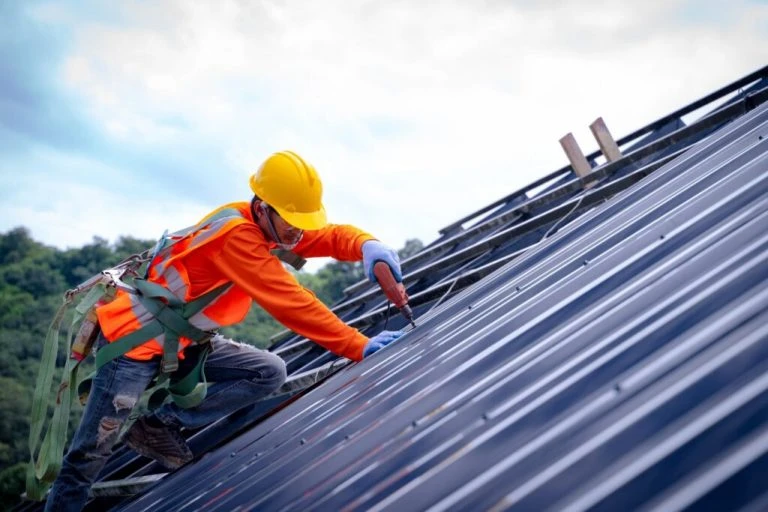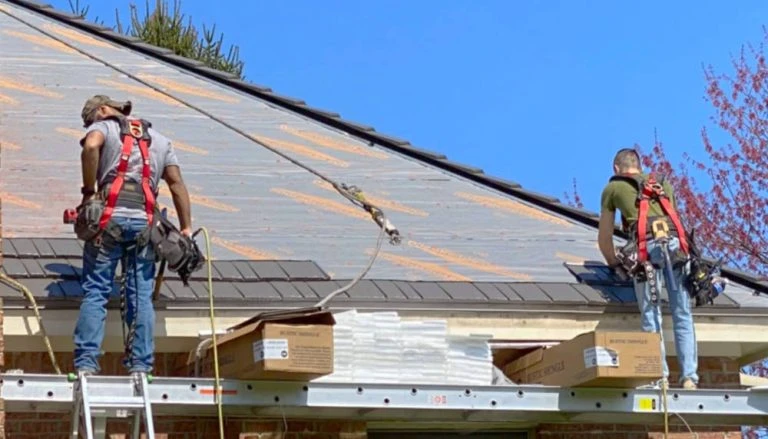The roof is a crucial component of any home, providing protection against the elements and contributing to the overall aesthetic appeal of the property. Residential roofing installation is a significant investment and requires careful planning and execution to ensure longevity and durability. This guide outlines the key steps involved in residential roofing installation, helping homeowners understand the process and make informed decisions.

Planning and Preparation:
- Assessment and Inspection: Before starting the installation, a thorough inspection of the existing roof (if any) is essential. This helps identify any structural issues, water damage, or underlying problems that need to be addressed.
- Material Selection: There are various roofing materials available, including asphalt shingles, metal, tile, slate, and wood. Each material has its pros and cons in terms of durability, cost, and aesthetic appeal. Homeowners should choose a material that fits their budget, climate conditions, and architectural style.
- Budgeting: A detailed budget should be prepared, accounting for material costs, labor, permits, and any unexpected expenses. It\'s wise to set aside a contingency fund for unforeseen issues that may arise during the installation.
Steps in Residential Roofing Installation:
- Removing the Old Roof: If replacing an existing roof, the old roofing materials must be removed. This involves stripping away shingles, underlayment, and any other materials down to the roof deck. Care should be taken to protect the surrounding landscaping and property during this process.
- Repairing the Roof Deck: Once the old roof is removed, the roof deck should be inspected for damage. Any rotten or damaged sections of the deck need to be repaired or replaced to ensure a solid foundation for the new roof.
- Installing the Underlayment: The underlayment is a protective layer that provides additional waterproofing. It is rolled out over the roof deck and secured in place. This layer helps prevent moisture from penetrating the roof structure and adds an extra barrier against the elements.
- Flashings and Drip Edges: Flashings are installed around roof penetrations, such as chimneys, vents, and skylights, to prevent water from seeping in. Drip edges are installed along the roof edges to guide water away from the fascia and prevent water damage to the underlying structure.
- Laying the Roofing Material: Depending on the chosen roofing material, the installation process will vary. For asphalt shingles, starter shingles are installed along the eaves, followed by overlapping rows of shingles working up towards the ridge. Metal roofing requires panels to be secured in place, while tile and slate roofs involve precise placement of individual pieces.
- Ventilation and Insulation: Proper ventilation is crucial for the longevity of the roof and the comfort of the home. Ridge vents, soffit vents, and attic fans help regulate temperature and moisture levels in the attic. Adequate insulation also contributes to energy efficiency and prevents heat loss.
- Final Inspection and Clean-Up: Once the roofing material is installed, a thorough inspection should be conducted to ensure everything is secure and properly aligned. Any debris from the installation process should be cleaned up, and the site should be left tidy.
Choosing the Right Contractor:
Selecting a reputable and experienced roofing contractor is a critical step in ensuring a successful roofing installation. The quality of workmanship directly impacts the longevity and performance of the roof. Homeowners should conduct thorough research and consider the following factors when choosing a contractor:
- Licensing and Insurance: Ensure the contractor is licensed to operate in your area and carries adequate insurance coverage, including workers\' compensation and liability insurance. This protects you from potential liabilities in case of accidents or damage during the installation process.
- Experience and Reputation: Look for contractors with a proven track record in residential roofing. Check online reviews, ask for references, and review their portfolio of completed projects. A reputable contractor will have positive feedback and a history of delivering quality work.
- Detailed Estimates: Obtain detailed written estimates from multiple contractors. The estimate should include a breakdown of material costs, labor, timelines, and any additional charges. This allows for a clear comparison and helps avoid unexpected expenses.
- Warranties and Guarantees: Inquire about the warranties offered on both materials and workmanship. A reliable contractor should provide a comprehensive warranty that covers defects and issues arising from the installation process.
- Communication and Professionalism: Effective communication is crucial throughout the project. Choose a responsive contractor, who listens to your concerns, and provides clear explanations of the work being done. Professionalism in interactions is a good indicator of the quality of service you can expect.
By carefully evaluating potential contractors and choosing one that meets these criteria, homeowners can have confidence in the quality and durability of their new roof. A professional contractor will not only execute the installation efficiently but also ensure that the roof adheres to all relevant building codes and standards. The best Roofing Installation Company TRU Roofing & Construction
Conclusion:
Residential roofing installation is a complex process that requires careful planning, skilled labor, and attention to detail. By understanding the key steps involved and choosing the right materials and contractors, homeowners can ensure a durable and aesthetically pleasing roof that will protect their homes for years to come. Investing in a high-quality roof installation not only enhances the curb appeal of the property but also provides peace of mind knowing that the home is well-protected against the elements.



